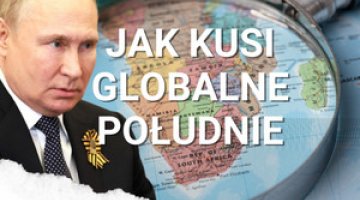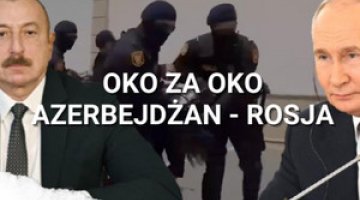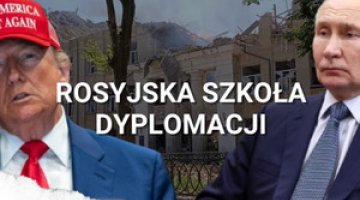The end of Prigozhin: the Kremlin disciplines the elite

On 23 August, shortly after 6pm Moscow time, an Embraer Legacy 600 aircraft owned by Yevgeny Prigozhin’s company, which had been flying from Moscow to St Petersburg, crashed in Tver oblast. According to the Federal Air Transport Agency (Rosaviatsiya), on board were the founder of the Wagner Group, his deputy and head of security Valery Chekalov, as well as group commander Dmitri Utkin and several mercenaries. All the passengers and three crew members (10 people in total) were killed. A second plane belonging to Prigozhin’s company was in the air at the same time, but it landed in Moscow after the crash without incident.
The Investigative Committee has opened a criminal investigation into “the violation of the aircraft’s rules of operation”. Russian investigators are considering several possible scenarios of the incident, including an ‘external’ cause (some media have suggested the plane was shot down or that there may have been an explosive charge on board), technical problems or pilot error. However, the idea that there was a terrorist attack has provisionally been ruled out.
Leading Russian TV channels were either silent or referred to the event very minimally. Telegram accounts affiliated or sympathetic to the Wagner Group commented on the event in a negative tone. Some of them suggested that the authorities were responsible: “Prigozhin was killed as a result of the actions of traitors to Russia” (the Grey Zone channel), “the people who gave this order have completely misunderstood the mood in the army” (as one so-called war correspondent put it). These channels have also suggested that Prigozhin’s plane was shot down with air defence missiles. In contrast, some Kremlin-adjacent propagandists (Vladimir Solovyov, Sergei Markov) have suggested Ukrainian involvement. Some voices have even suggested the crash was staged by Prigozhin himself, who wanted to fake his death in order to escape abroad safely.
Commentary
- According to the information currently available, the plane crash bears the hallmarks of an execution carried out in a ‘special operation’ regime: the ideas that the plane was shot down, succumbed to a bomb on board or to artificially staged technical problems all fit this interpretation equally. There is no reason to accept the idea that Prigozhin staged his own death. Regardless of what legal classification of the event the Kremlin ultimately chooses (at present it is unclear whether the authorities will blame Ukraine), the crash is likely to be widely perceived as an assassination ordered by Vladimir Putin. Incidentally, this would be in line with the president’s intentions; he needed to send a strong warning signal to anyone who might consider following in Prigozhin’s footsteps. This signal was reinforced by a certain symbolic significance: the warlord died exactly two months after he launched the failed mutiny. If it is confirmed that Prigozhin’s plane was shot down by air defences, this could be seen as punishment for the Wagner forces’ downing of several helicopters and military airplanes on 23 June.
- After the failed revolt of 23–24 June, Prigozhin’s liquidation by the authorities was only a matter of time, given Putin’s need to rebuild both his shaky position in the system and his image as a strong leader ahead of the presidential elections scheduled for March 2024. The Wagner Group’s march on Moscow was the most serious manifestation of internal instability in Russia in two decades. It exposed the weaknesses in the system, including the disorganisation and low morale in the army and secret services. The mutiny also constituted an unprecedented humiliation for Putin, who found himself forced into making an unwanted compromise with someone he had publicly labelled a ‘traitor’. If Prigozhin had been allowed to continue his public activity undisturbed for an extended period of time, that would have been evidence of the president’s ineptitude in the eyes of the elite, and could potentially have led to the disintegration of the system of government.
- As a result of the ‘compromise’ of 24 June, Prigozhin retained control of the Wagner Group, whose troops were relocated to Belarus, and of his business structures and part of his state procurement income: the only element he formally lost was his media empire. He had planned to reconsolidate his power base in Africa, where – in addition to carrying out foreign policy tasks commissioned by the Kremlin – Wagner has derived lucrative income from its contracts with local authorities. Structures which had been under Prigozhin’s control, including Wagner affiliates, are still present in at least four African countries: Mali, Sudan, the Central African Republic and Libya.
- For two months after the mutiny – presumably out of fear of deeper internal destabilisation – the Kremlin did not take any decisive steps to punish the guilty or settle accounts with those it deemed insufficiently loyal. The reasons for the delay may have included the favourable mood towards Prigozhin in parts of the army and secret services: Prigozhin enjoyed the support of some commanders in the army, who had noted the ineptitude of the Chief of the General Staff of the Russian Federation, Valery Gerasimov, in commanding combat operations in Ukraine. Putin may also have had concerns about how the ruling elite would react to potential purges of the top brass. Over the past two months, the authorities had probably been determining the precise extent of the anti-Kremlin sentiment in the army, secret services and ‘civilian’ elite, and were also assessing what the risks of striking back against Prigozhin might be. Creating an image of political unity and resilience within the regime remained a priority during this time.
- The crackdown on representatives of the security agencies and the Armed Forces has been kept under wraps, and thus far has probably been quite sporadic. There is strong circumstantial evidence that officers suspected of having close ties with the head of Wagner and who shared his negative opinion of the top military command have been removed. These include General Sergei Surovikin, the deputy commander of Russian troops in Ukraine and commander of the Air and Space Forces (ASF), who was dismissed on 18 August, according to the available information. According to unofficial reports, General Viktor Afzalov, the ASF’s former chief of staff, has been appointed his successor.
- The authorities also took limited action to neutralise selected representatives of the nationalist-imperialist circles critical of the Kremlin (the so-called turbopatriots). After Prigozhin’s rebellion, they began to be perceived as a threat as they had been spreading demands similar to those put forward by Wagner’s leader. These included a change in the strategy for prosecuting the war against Ukraine; resignations of senior commanders; and criticism of the corrupt system, including Putin himself, for ineptitude and defeats at the front. On 21 July Igor Girkin (a.k.a. Strelkov), a former FSB spetsnaz colonel and one of the most recognisable representatives of turbo-patriotic circles, was arrested. He had feuded with Prigozhin, but had also ruthlessly attacked the government’s military policy and the president himself. The failure of Girkin’s supporters to react to his arrest with any great fervour may have emboldened the Kremlin to remove Prigozhin definitively.
- As a result of the mutiny, Putin’s suspicion and distrust of members of the establishment is likely to have increased significantly. This may result in a personnel reshuffle and demonstrative acts of repression (including with the use of corruption charges) to intimidate the ruling elite and rebuild his image as a tough leader. Given the electoral calendar (regional and local elections in September this year, presidential elections in March 2024), however, any such purges are likely to be postponed. Maintaining uncertainty and fear within the elite about the extent of the possible repression should mobilise the state apparatus to ensure the Kremlin gets the outcome it desires in these elections.
- The showdown with Prigozhin is likely to effectively intimidate those members of the elite who have been dissatisfied with the Kremlin’s policies for some time. However, their attitude may change in the event of further failures by the Russian Armed Forces in Ukraine, and/or if there is an increase in discontent among the public, especially against the backdrop of Russia’s deepening economic problems. In this situation, another test of strength on a scale similar to the June mutiny could lead to a reshuffle at the apex of power. Such an event may lead to a deeper systemic change and a revision of Russia’s foreign policy. However, after the death of the head of the Wagner Group, if another revolt breaks out we should not expect its leaders to make any attempts to negotiate with Putin, as any guarantees he provides are clearly of no value whatsoever.
- Decisions on the redistribution of Prigozhin’s economic and military assets among trusted members of the elite are likely to be taken in the coming weeks. His death will also disrupt the current form of the Wagner Group. There are reports that its troops in Belarus intend to return to Russia. The regime in Minsk is unlikely to be interested in sponsoring the Wagner forces any longer; however, some of them may remain in the pay of the Belarusian armed forces, carrying out training related to the conduct of hybrid operations.





